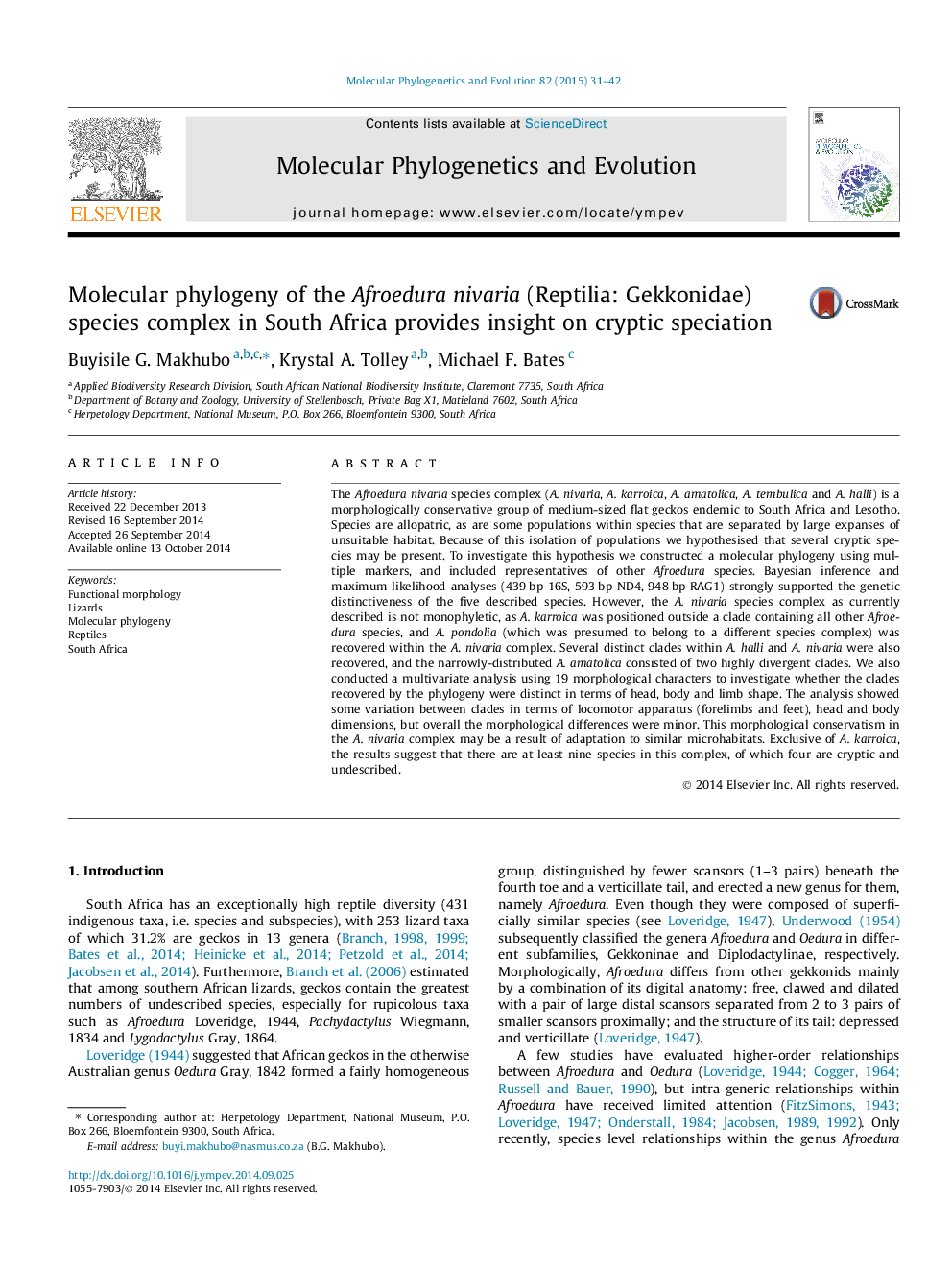| Article ID | Journal | Published Year | Pages | File Type |
|---|---|---|---|---|
| 5919007 | Molecular Phylogenetics and Evolution | 2015 | 12 Pages |
â¢First estimate of molecular phylogenetic relationships within the A. nivaria complex.â¢Phylogeny supports the genetic distinctiveness of the five described species.â¢A. karroica is outside the A. nivaria complex, and A. pondolia is within the complex.â¢No observable pattern of morphometric variation defines the clades.â¢At least nine species are suggested, of which four are cryptic and undescribed.
The Afroedura nivaria species complex (A. nivaria, A. karroica, A. amatolica, A. tembulica and A. halli) is a morphologically conservative group of medium-sized flat geckos endemic to South Africa and Lesotho. Species are allopatric, as are some populations within species that are separated by large expanses of unsuitable habitat. Because of this isolation of populations we hypothesised that several cryptic species may be present. To investigate this hypothesis we constructed a molecular phylogeny using multiple markers, and included representatives of other Afroedura species. Bayesian inference and maximum likelihood analyses (439Â bp 16S, 593Â bp ND4, 948Â bp RAG1) strongly supported the genetic distinctiveness of the five described species. However, the A. nivaria species complex as currently described is not monophyletic, as A. karroica was positioned outside a clade containing all other Afroedura species, and A. pondolia (which was presumed to belong to a different species complex) was recovered within the A. nivaria complex. Several distinct clades within A. halli and A. nivaria were also recovered, and the narrowly-distributed A. amatolica consisted of two highly divergent clades. We also conducted a multivariate analysis using 19 morphological characters to investigate whether the clades recovered by the phylogeny were distinct in terms of head, body and limb shape. The analysis showed some variation between clades in terms of locomotor apparatus (forelimbs and feet), head and body dimensions, but overall the morphological differences were minor. This morphological conservatism in the A. nivaria complex may be a result of adaptation to similar microhabitats. Exclusive of A. karroica, the results suggest that there are at least nine species in this complex, of which four are cryptic and undescribed.
Graphical abstractDownload full-size image
